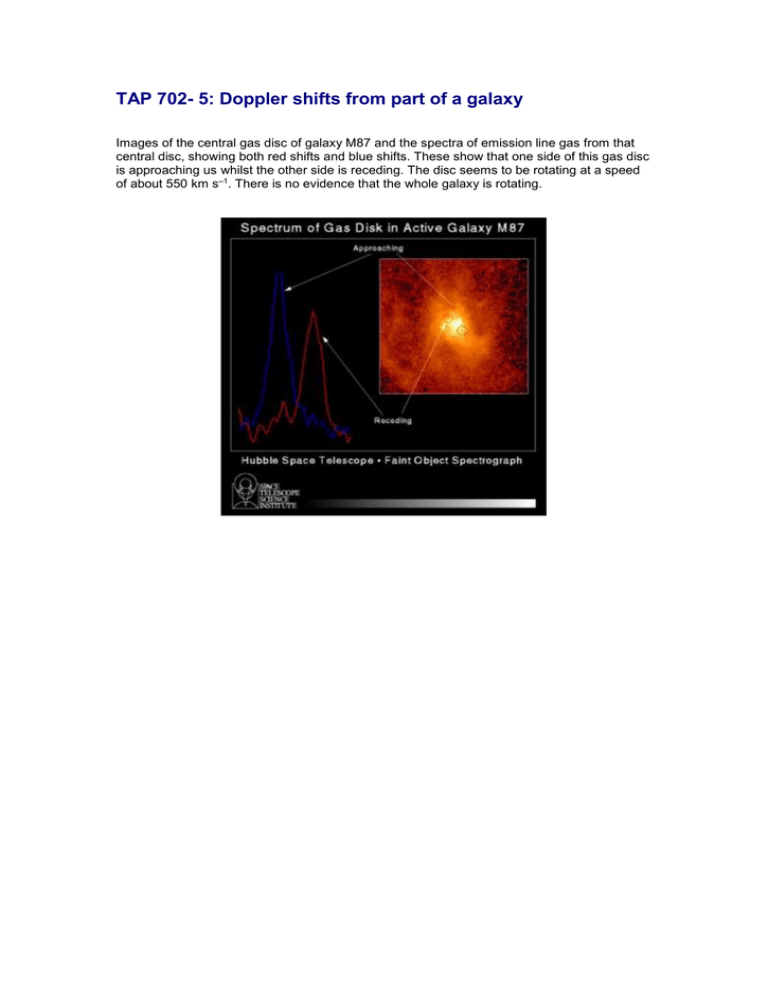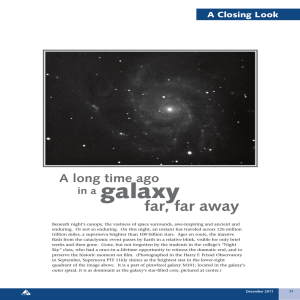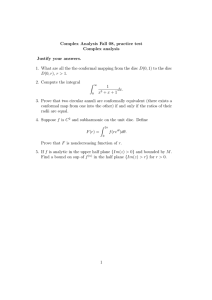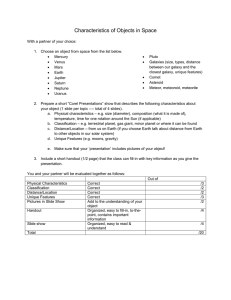TAP 702- 5: Doppler shifts from part of a galaxy
advertisement

TAP 702- 5: Doppler shifts from part of a galaxy Images of the central gas disc of galaxy M87 and the spectra of emission line gas from that central disc, showing both red shifts and blue shifts. These show that one side of this gas disc is approaching us whilst the other side is receding. The disc seems to be rotating at a speed of about 550 km s–1. There is no evidence that the whole galaxy is rotating. Practical advice These images of M87 are taken by the Hubble Space Telescope. The large image shows the nuclear regions as well as the prominent optical jet. The inset shows the nucleus and the central gaseous disc of the galaxy in more detail. The second image shows the spectra from emission line gas in the central disc of the galaxy on either side of the nucleus at the locations indicated in the diagram. The gas on one side of the galaxy is strongly red shifted and on the other side blue-shifted, showing that the disc is rotating at a speed of about 550 km s–1. Note that M87 itself does not rotate – the centre part does. Social and human context Exploration of the Universe requires inferences from observations. We do not know that the galaxy is rotating, but how else can we explain the observations? External reference This activity is taken from Advancing Physics, chapter 12, 130s (Photograph courtesy of NASA/STScI)


